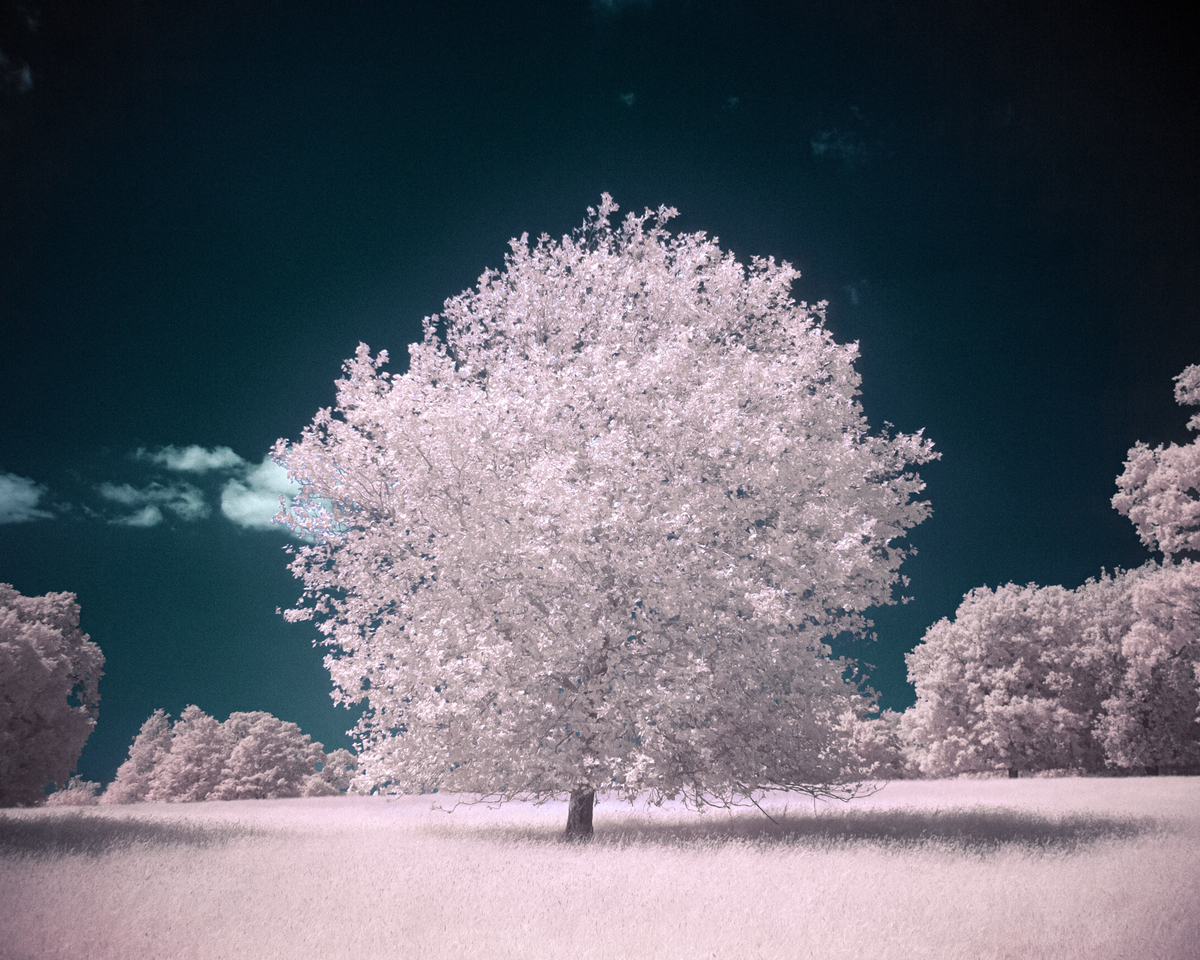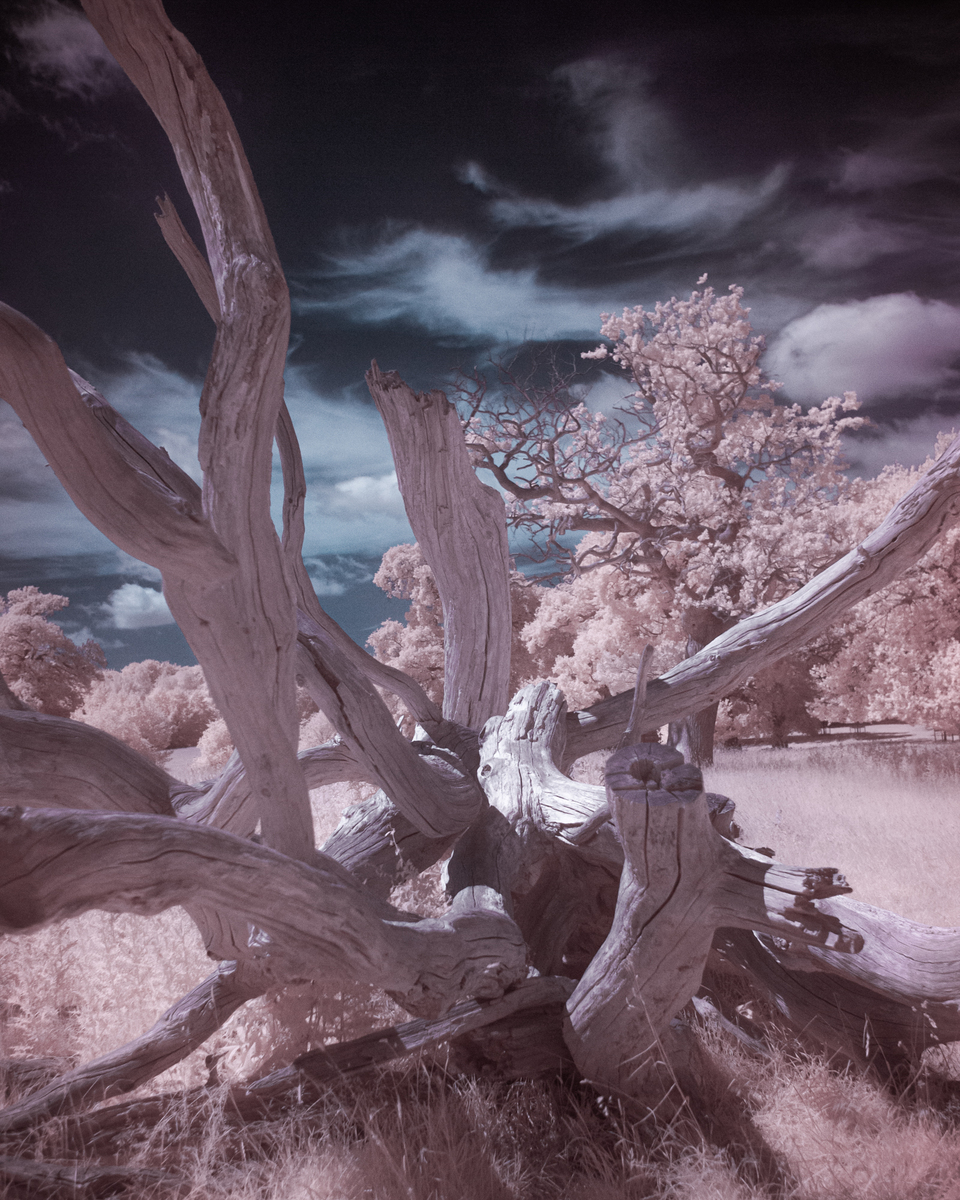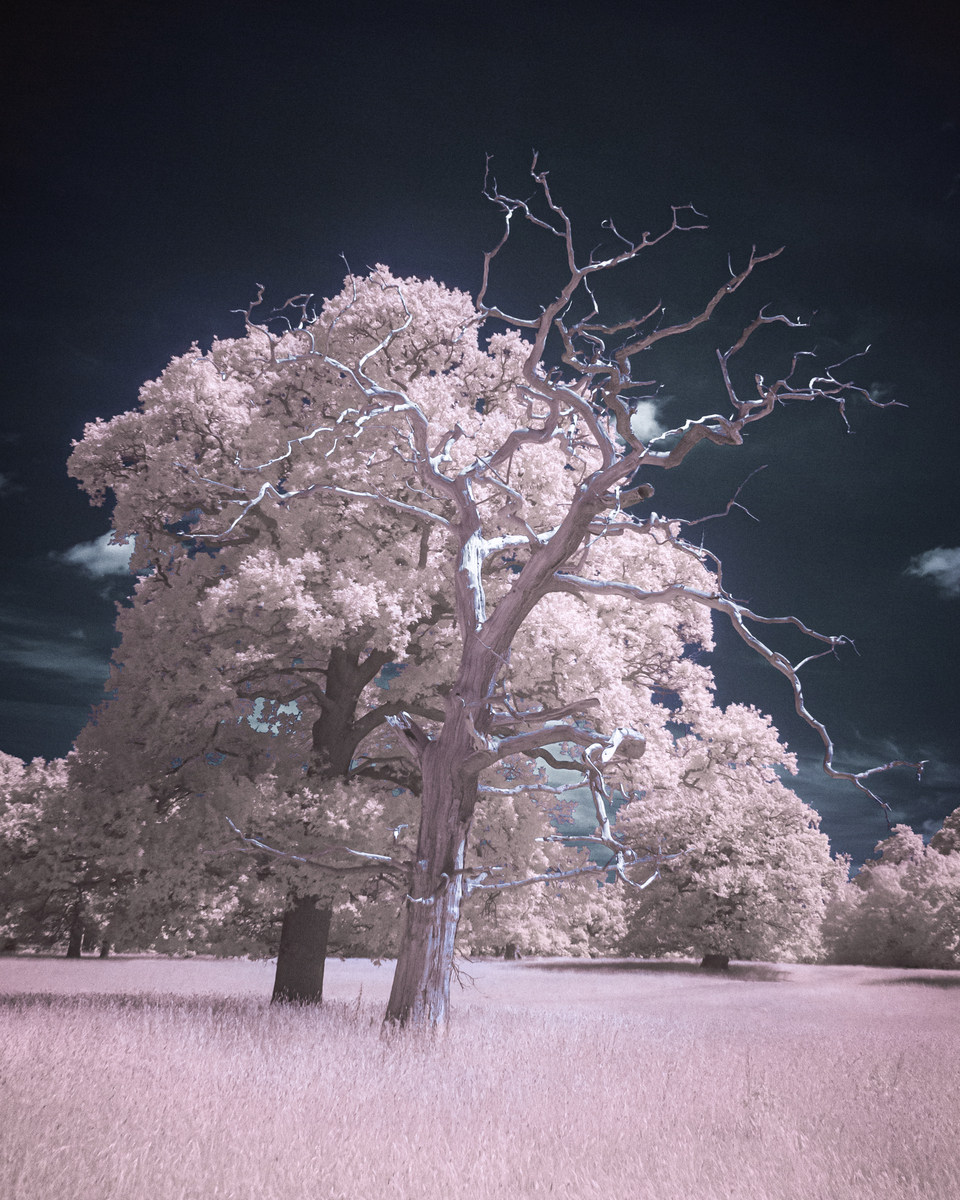Infrared Photography
Bright sunny summers days are not typically great for landscape photographers. Harsh shadows, and bright direct light don't typically make for good photographic conditions. Sunrises and sunsets offer the best light, but here in the UK, at midsummer, that means very early starts or late finishes. However, Infrared photography is a great approach to making the most of these challenging bright conditions without sacrificing too much sleep.
In many ways, Infrared photography is a lot like normal photography, the only difference is that you are capturing wave lengths of light that you cannot actually see. You can however, usually anticipate what the final image will look like. Typically, foliage will reflect most infrared light, and will therefore be the brightest subjects. Other materials will reflect Infrared light differently to normal visible light. Clouds are good reflect lots of light, but the blue sky can reflect very little, making it look like there is no atmosphere. Water, depending on reflections, can also look very dark.
Although modern camera sensors can capture Infrared light, most have an Infrared cut filter in from of them to improve image quality. This filter prevents nearly all infrared light from passing through to the sensor. However, a tiny amount of infrared light does get through, but it's not enough to impact your photographs. So, to take an infrared photograph, you just need add an Infrared filter to the front of your lens, such as a Hoya R72, that blocks all normal visible light, and only allows infrared light through, and when combined with the IR cut filter on the sensor, a tiny amount of IR light makes it through. In a practice, this means Infrared Photos are possible by just adding a simple filter to your camera, but the amount of light that eventually makes to the sensor is so small, that you'll need exposure times of over 30 seconds, even on bright sunny days when their is the most amount of infrared light in the atmosphere. So, technically possible, but long exposure times mean motion blur will be issue, and hand held shots are out of the question.
Hopefully, it should be pretty obvious that if we could remove the IR cut filter from in front of the sensor, then, inn combination with with the R72 Infrared filter on the front of the lens, then we can restrict all visible light, and allow all Infrared light through to the sensor. This allows us to take hand held infrared photographs on bright days, and my current setup can handle 1/60 second exposures at F2.0 and ISO 400 on a converted EOS-M camera and EF-M 22mm lens, with a Hoya R72 filter.
If you are comfortable converting your own camera, it is very possible to do yourself, but you should be okay with the risk of permanently damaging your camera in the process. If you are not comfortable doing this, there are companies online that will do this for you. Converting your camera is beyond the scope of this article, but you can search online for instructions for your camera model. Please be aware, that this will convert your camera into a full spectrum sensor, without any additional filters, it will capture photographs with both visible light and Infrared light, in practice this means your photographs will have a pink cast to them. But, this will give you the ability to use different IR filters. To only capture IR light, you'll need a filter that blocks light up to 720nm, but you can also use a full spectrum camera to capture near-infrared light, which is anything over 550nm.
Processing IR photographs will be the topic of another article, as there are many options and styles you can choose. I prefer to correct the white balance, then boost the highlights, and then use my own presets to flip the colours in the red and blue channels. This is the process that gives bright pink and white foliage, and deep blue skys with crisp clouds.
You can see more of my Infrared Photographs in my Portfolio, as well as on my Instagram feed.



